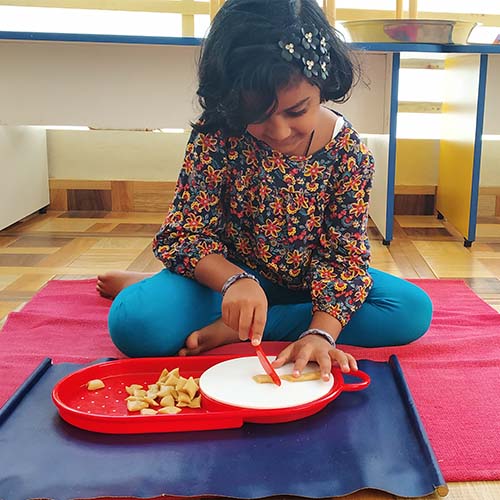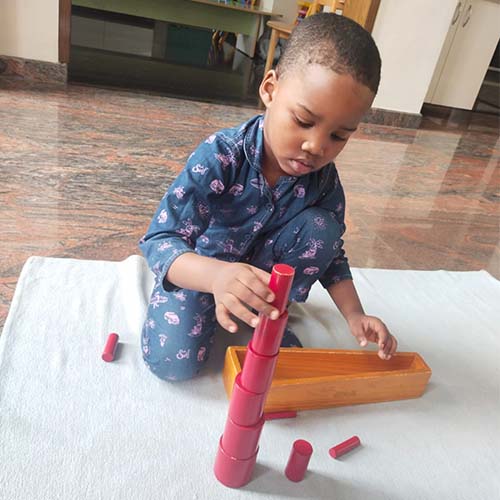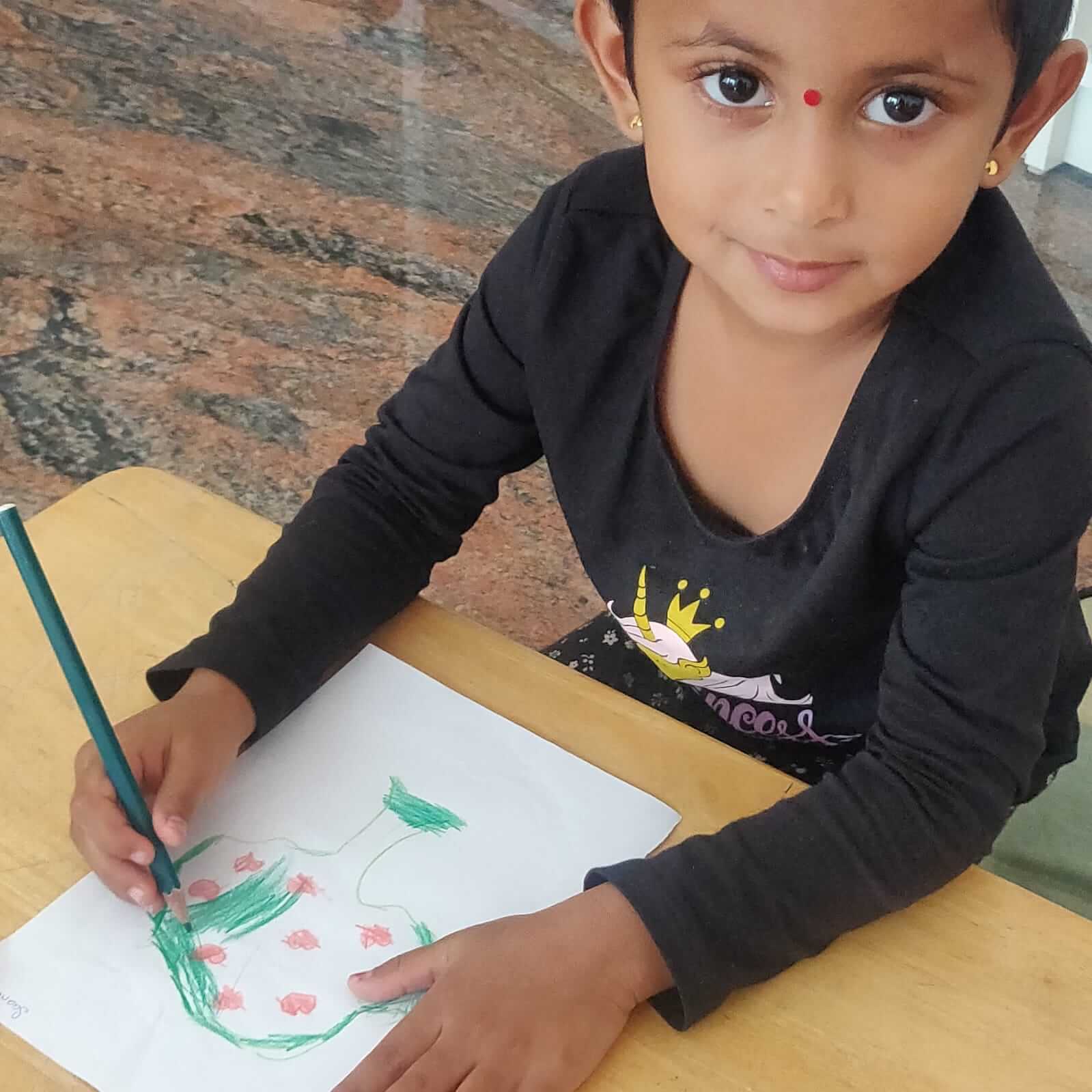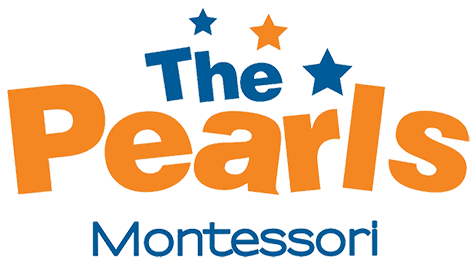Academics

A Teacher’s (Montessori Adult) role in a Montessori classroom is to guide the child through what is called as the prepared environment, i.e., a classroom in which the way of learning is scientifically designed to nurture the child’s intellectual, physical, emotional and social development through active exploration, self directed decision making and independent learning. It may come as a surprise and as an overwhelming thought whether babies, toddlers and primary age group of children are capable of doing so. But it is not an exaggeration when we say so, because the Montessori pedagogy has been proven and validated by science.
At Pearls, what lies central to our philosophy is the triangular connect between the Teacher (Montessori Adult), the Child and the prepared classroom (environment) with the Child being the apex. The Child is at the core and is worth of the respect that we would show an adult. That is why we at The Pearls Montessori do not address children as kids.
With respect to academics at The Pearls, we do not follow the conventional play based learning for the early years learning. We conform to the Montessori set of materials, designed to support a child’s learning of sensorial concepts such as dimension, colour, shape and texture, and academic concepts of arithmetic, languages, science, geography and history. Children by nature have a scientifically trained mind.
In order to understand how we differ from a kindergarten or a playschool, one needs to understand two important aspects – the learning materials used and the way the Adult is able to self direct a child to engage with those materials to promote independent learning and training the child’s natural ability towards learning. Children here learn by engaging with hands-on activities with the materials individually and ini pairs or small groups. We follow a three-hour ‘work cycle’ in which they are guided by the adult/ teacher to choose thier own learning activities. They are given the freedom to choose what they work on, where they work and for how long they work on any particular activity, all within the stipualted boundaries of the environment.
There is a healthy nature of peer to peer learning and also learning from seniors owing to the mixed age groups in the environment. We do not follow any mode of rewards or punishments as most of the learning that happens enables self correction in a child.
These aspects make us different from a conventional kindergarten or playschool and other pre-schools. A child, during the stay at Pearls “learns the art of learning”, which he or she can carry forward in their lives.
Children perform the following activities

1. Practical Life
This involves basic activities, and how to do them perfectly. This activity helps the child to control his movements. It involves simple tasks like folding, unfolding and carrying mats, carrying tables and chairs, washing hands, dusting and cleaning a table, cleaning up the workspace, etc.

2. Sensorial
Every quality that can be perceived by the senses – size, shape, composition, texture,
visual, auditory, weight, temperature, etc. The purpose of sensorial work is to get conscious information and classify the environment. This enables the child to organize his intelligence and adapt to the environment.

3. Language
In the urban areas of India, a child is exposed to multiple languages. It starts with the mother tongue at home, the local language and English. When a child enters our environment, he gets the knowledge of the language spoken at home. Inhere, we start with English sounds and slowly graduate the child to the pronunciation of words. Once the child registers these sounds in the brain, he is introduced to moving alphabet arrangement, followed by writing on sandpaper and eventually writing in the book. Children learn English, Hindi and Kannada or any local language relevant to their state.

4. Mathematics
Usage of the numbers starts from a very early age, like age, number of chocolates, class studying, etc. Teaching the child numbers from 1 to 100 is just like teaching them symbols. But if the child right from the start can identify the value associated with each number, the teachings will be forever. We have materials with precision, which enable conceptual understanding. The child by the end of the course will be able to do addition, subtraction, multiplication and division. Apart from this, he will be able to identify geometrical shapes. Specific activities even focus on fractions if the child shows interest.

5. Cultural Work
The child needs to get exposure to the world. One way he does this is through
interactions with his family, friends, relatives, etc. In the Montessori environment, specific activities introduce the child to the fields of art, geography, history, and science.

